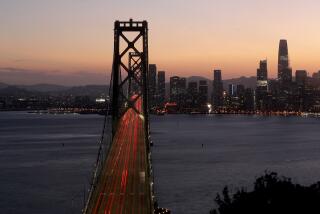Automobile Emissions and Global Warming
- Share via
Re “Big Cars, Shrinking Glaciers,” editorial, Dec. 29: Recognition of global warming by the public is a first step and will occur only via the media. Unfortunately, reducing automobile consumption, although helpful, is not enough. Energy consumption and standard of living are undeniably correlated, and the United States is the world leader in fossil-fuel-based energy consumption. Other parts of the world, like China and India, want to catch up. The only answer to global warming (shrinking glaciers) will be another form of energy production.
Suggestions like using hydrogen-based fuel cells will not help if the hydrogen is produced by fossil-fuel-based energy. Other forms of energy, like solar and wind energy, are not available in sufficient quantities except for, God forbid, nuclear fusion or fission, and only nuclear fission is available today. Society will have to make a choice between global warming, its standard of living and its misguided views of the risks of nuclear power.
Ivan Catton
Professor of Engineering
UCLA
*
Your editorial notes that due in part to carbon dioxide emissions, Montana’s Glacier National Park will likely have no glaciers within the next 30 years. But this glacial retreat is not new or big-car connected.
The Little Ice Age reached its maximum extent here about 1750, when general melting began. By 1879, John Muir found that the ice had already retreated 48 miles up Alaska’s Glacier Bay. By 1916, the retreat was 65 miles.
Today, while some glaciers are retreating, two west-side glaciers are actually advancing. The source: the National Park Service’s Official Guide and Map for Glacier Bay. The point: None of this could have been caused by man, let alone by carbon dioxide from cars. The advice: Stop global whining.
Donald B. Hagler
San Marino






